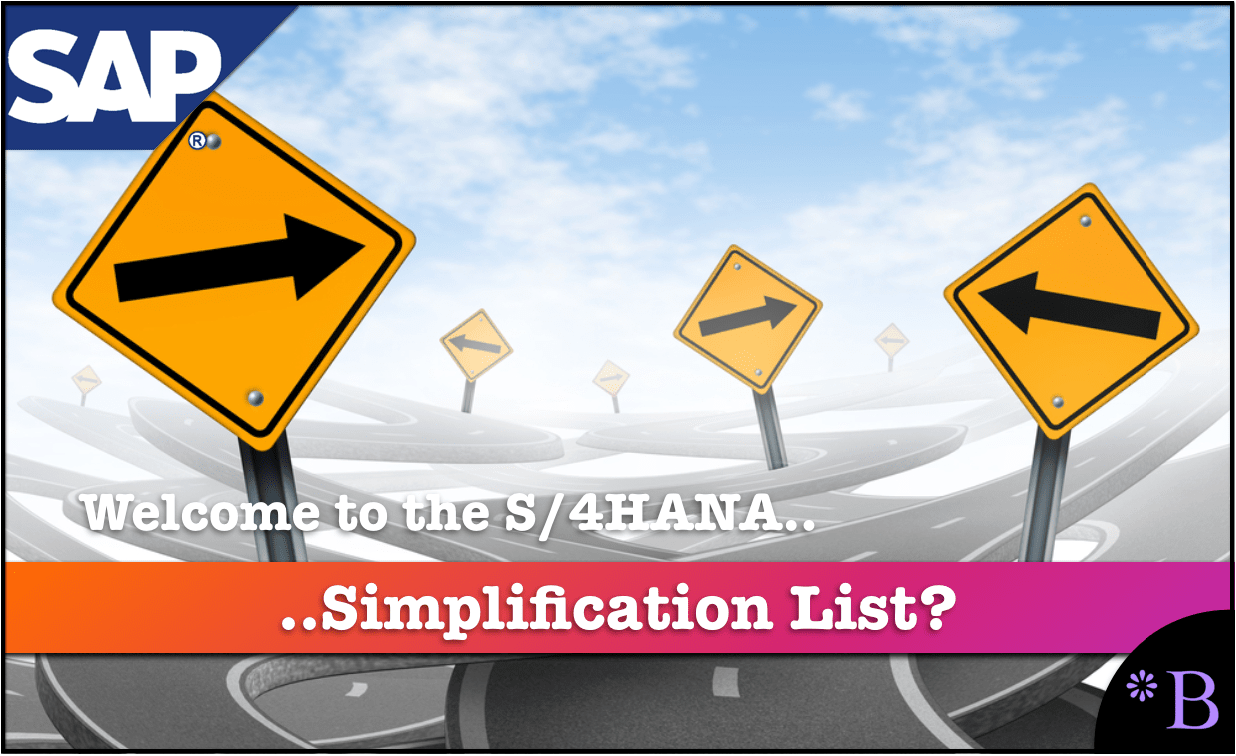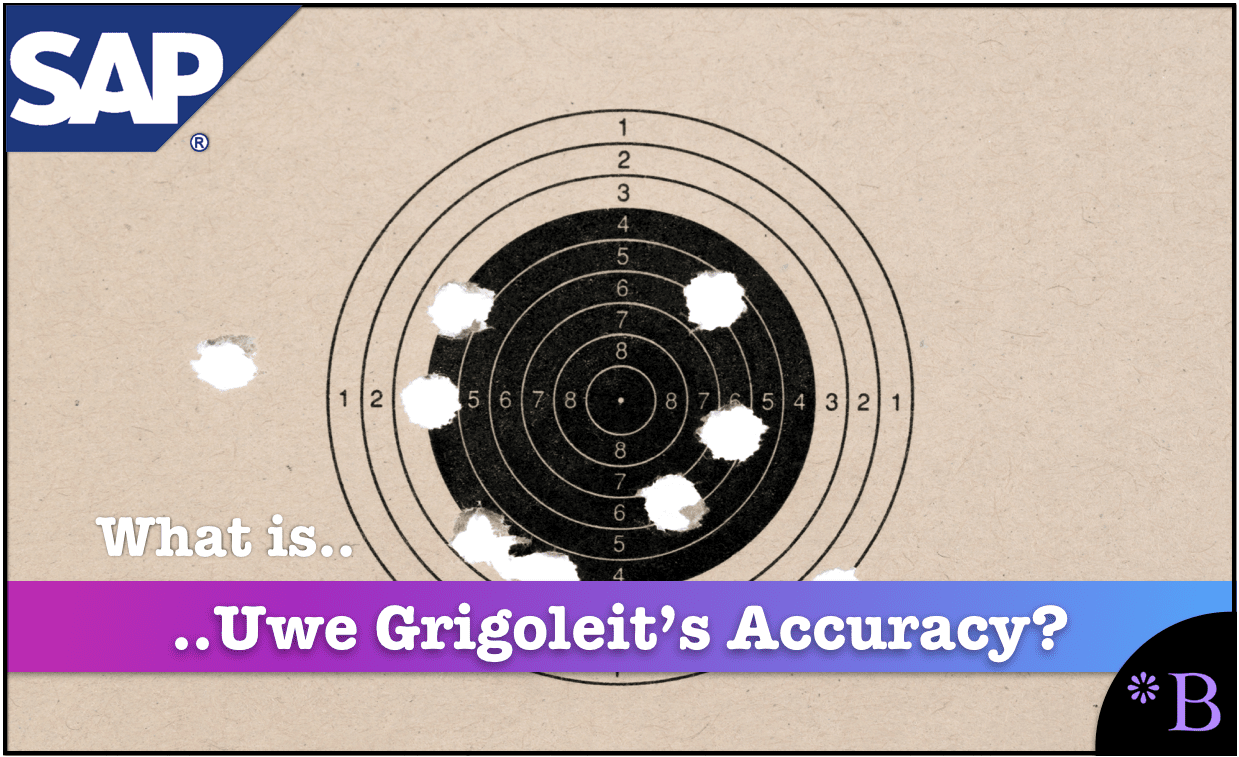How to Best Understand The S/4HANA Simplification List
Executive Summary
- SAP’s has made exaggerated claims regarding S/4HANA’s readiness.
- SAP continually pivots away from the topic of the completeness of each module.

Introduction
SAP had many changes that it needed to sugarcoat when companies were to move from SAP ECC to S4HANA. Therefore, SAP came up with some marketing spin on their changes document and called it the “Simplification List.” This is a play on or extension of the SAP Run Simple initiative, which has now been canceled due to its rejection in the market. Calling these changes a Simplification List can be considered a type of word game that SAP plays on its customers. And SAP is hoping their customers do not notice. You will learn the reality, not the marketing spin, and how SAP has misnamed a listing of changes to S/4HANA from ECC as a “Simplification List” that is anything but simple. You will learn the reality around the readiness of S/4HANA and how this connects with the Simplification List.
Our References for This Article
If you want to see our references for this article and related Brightwork articles, see this link.
Notice of Lack of Financial Bias: We have no financial ties to SAP or any other entity mentioned in this article.
- This is published by a research entity, not some lowbrow entity that is part of the SAP ecosystem.
- Second, no one paid for this article to be written, and it is not pretending to inform you while being rigged to sell you software or consulting services. Unlike nearly every other article you will find from Google on this topic, it has had no input from any company's marketing or sales department. As you are reading this article, consider how rare this is. The vast majority of information on the Internet on SAP is provided by SAP, which is filled with false claims and sleazy consulting companies and SAP consultants who will tell any lie for personal benefit. Furthermore, SAP pays off all IT analysts -- who have the same concern for accuracy as SAP. Not one of these entities will disclose their pro-SAP financial bias to their readers.
*This article was originally written in January 2017 but has been updated as of February 2021.
What is S/4HANA?
S/4HANA is the first significant upgrade to what was R/3.
- ..aka ECC (Enterprise Core Component)
- ..aka Business All in One
- aka All in One…
SAP’s Position on S/4 HANA’s Readiness
SAP Run Simple is a now-defunct marketing construct that proposed that SAP was designed to be managed very simply. We analyzed SAP’s Run Simple program in the article How Accurate Was SAP on Run Simple? In the article How Accurate Was ComputerWorld on SAP Run Simple?
One thing that will undermine SAP Run Simple is the readiness of S/4 HANA. Incomplete applications are not at all simple—just the opposite.
While researching this topic, I found the following quotation from SAP. This article quote I found is quite impressive. See it below:
“If you look at the S/4HANA system that we released in November of last year that we are calling 1511, we can say that this is already a complete ERP system,” said Uwe Grigoleit, SAP global head of business development for Business Suite on HANA and HANA applications.”
Errrrr….. could you release a complete ERP system without much functionality?
That seems to be the line Uwe is walking here. You can release anything, and it is still that thing. A motorcycle with no pistons is still a motorcycle. And you can release it that way. However, when a motorcycle is released that way, it is obvious. With software, verifying if the application is ready takes much more analysis. SAP and SAP consulting firms have been doing everything they can to hide the actual maturity level of S/4HANA.
Pivoting From the Completeness of Each Module
Let us go on to see more from Uwe.
“Why can we say this? If we are looking at pure modules we are shipping already, S/4HANA spans across financials, material management, inventory management, procurement, distribution, product and planning,” he explained. “It’s going across the vast majority of the ERP system already.”
- This eliminates the question of the completeness of each of these modules.
- Uwe does not state that 1511 is not a completed ERP suite because most functionality is incomplete. Some old functionality works, but it’s just a big mixed bag.
- S/4 HANA has multiple modules (recently renamed) called Supply Chain, Sales, Research and Development and Manufacturing, etc.. These names are not mentioned even in SAP’s marketing literature as introduced applications. Why? Why are the strange four-digit release numbers associated with each version (on-premises or cloud)?
1511 is a beta release with some functionality components changed while many others are not. 1511 comes with a lengthy document called the “S/4HANA Simplification List.”
Is This a Simplification List?
This is a document that describes all the changes to ECC. The term simplification is a euphemism. Let us review the issues.
Issue #1: Misuse of the Term Simplification
Many of the changes are not at all simplifications. Why they would be listed in the S/4HANA Simplification List is not clear. What is the real purpose of calling the list of changes in the S/4HANA Simplification list? By calling it something so misleading, is this a way of convincing customers that changes are always simplifications?
Issue #2: Functionality Removal = Simplification?
The S/4HANA Simplification List lists areas removed from ECC as “simplifications.” What if you, as a company, rely on this functionality? Is the S/3 Simplification List making things more simple or more complicated?
Issue #3: The Imposition of Enormous Overhead
Even if we leave out the topic of which areas of functionality are ready, we still face a problem. Unless you are a Greenfield customer that the company relied upon are not part of S/4 HANA. One would need to extensively read the lengthy S/4HANA Simplification List, along with all the associated SAP notes that explain what things (fields, transactions, etc..) have been changed.
A Lot of Information to Digest in the Simplification List
Understanding all the implications is a ton of work. So much so that SAP primarily focuses on migration or re-implementation, which is so tricky with S/4 HANA.
Uwe Grigoleit Accuracy Problem
I think Uwe Grigoleit knows that what he is saying is untrue, but as Global Head of Business Development, let’s first acknowledge that he has probably told some whoppers in the past. Considering he may not have ever logged into an SAP system himself, it would be easy for him to hear something second-hand and then start repeating it. Uwe Grigoleit is in sales, so he wants to sell S/4 HANA and, therefore, has a strong bias to mislead customers on the status of S/4 HANA.

This is not the first time we have encountered statements from Uwe Grigoleit. We covered his remarks in the article How SAP Confuses People on S/4HANA on Premises Versus S/4HANA Cloud. And we found his comments to be not only inaccurate but highly deceptive. We know we will receive incorrect information whenever we see Uwe Grigoleit’s name.
Uwe Grigoleit is an inaccurate source of information on SAP, and most of his statements are not true when fact-checked.
Conclusion
The S/4HANA Simplification List is misnamed.
Instead of being called the S/4HANA Simplification List, it would be called the “changes made is.” Naming the S/4HANA Simplification List makes it seem as if everything in the S/4HANA Simplification list is a simplification. However, in most cases, the opposite is true.
I wrote this article because I am beginning to wonder how many people have investigated S/4 and know that outside of Finance (which also has rough areas and a big question mark with how many Fiori apps can be used). S/4 as a suite is not ready to be implemented. This is still true in 2019.
Curious about the reality of S/4HANA implementations? See our S/4HANA Implementation Study for the real stories and details on actual S/4HANA implementations.